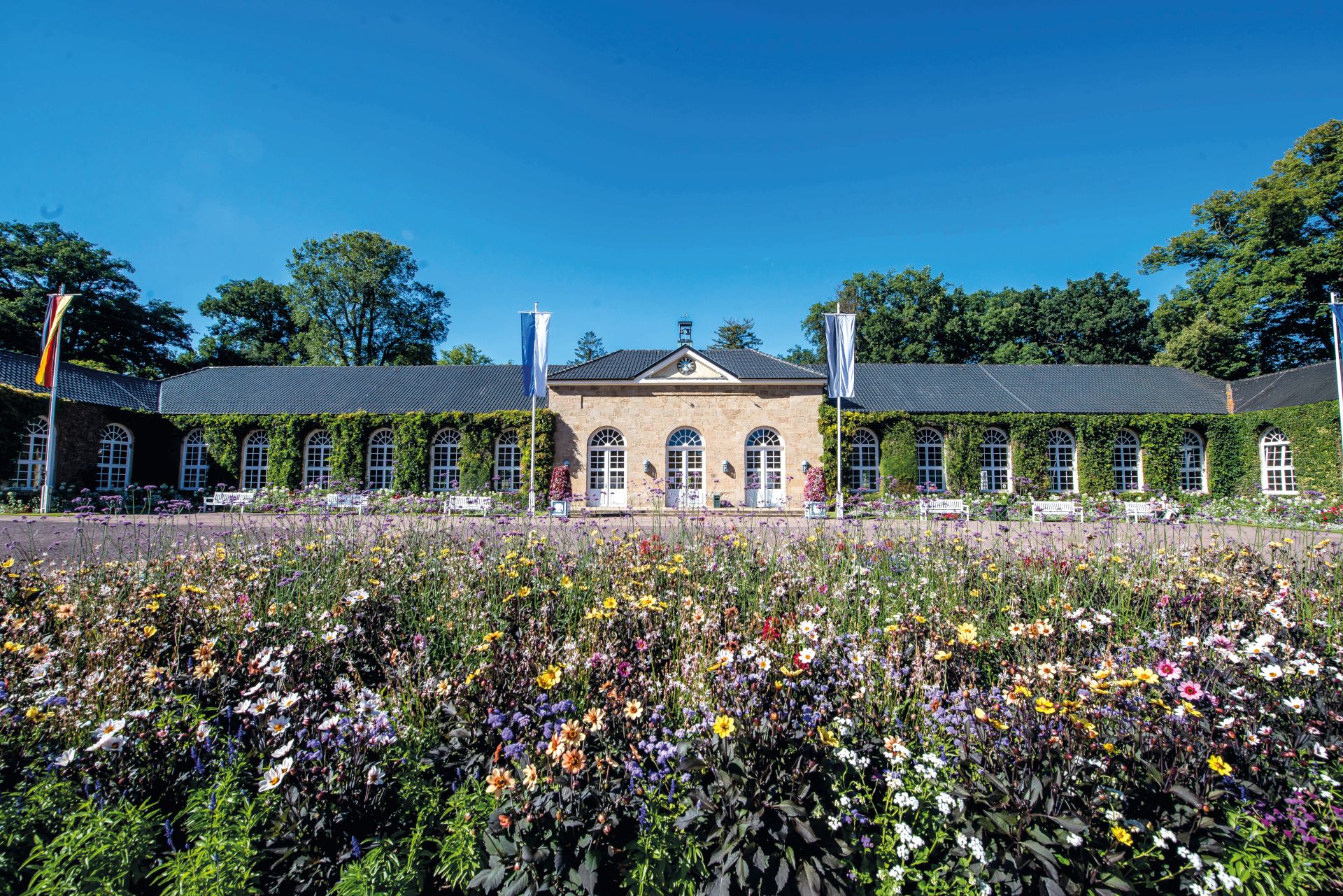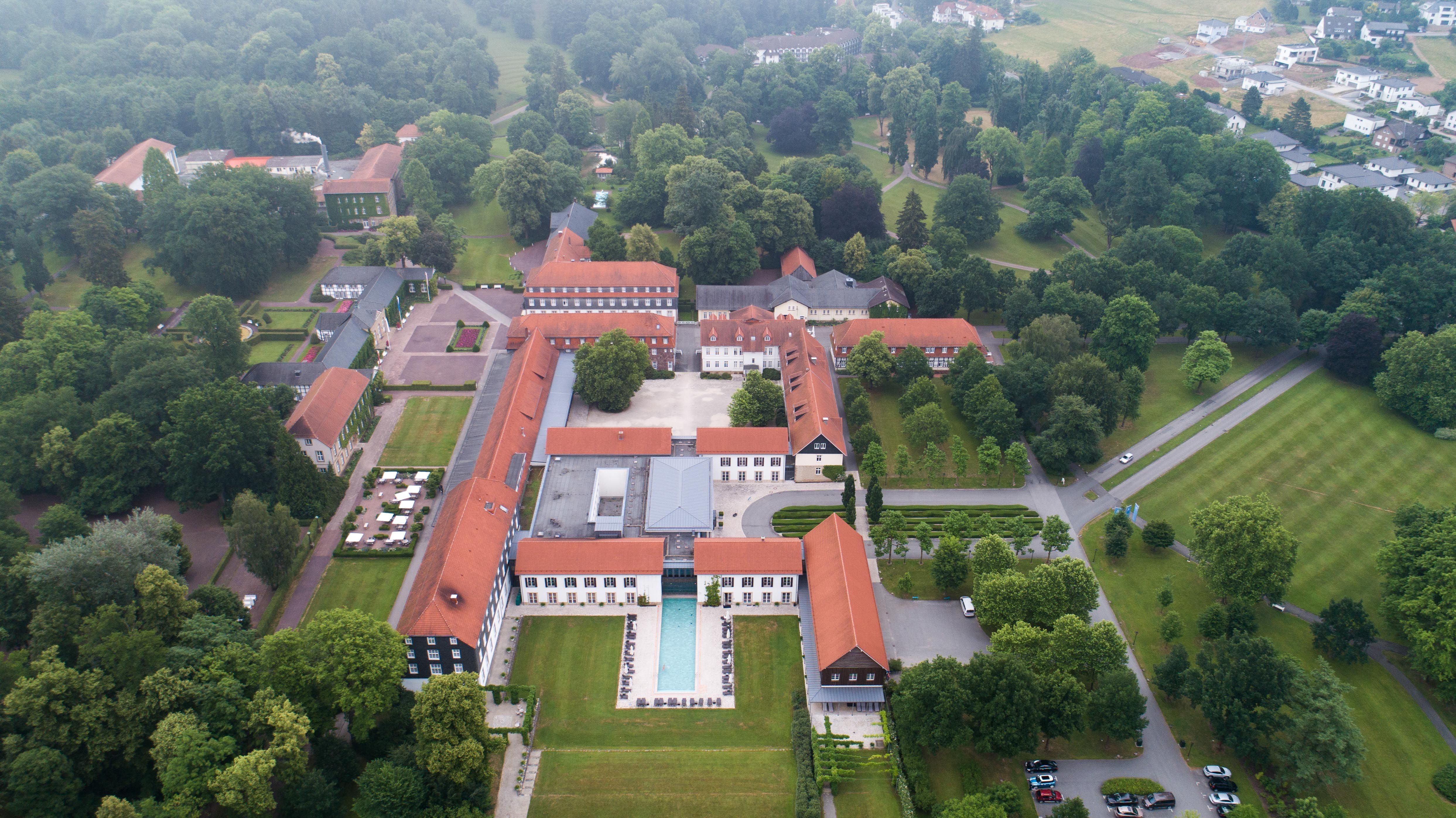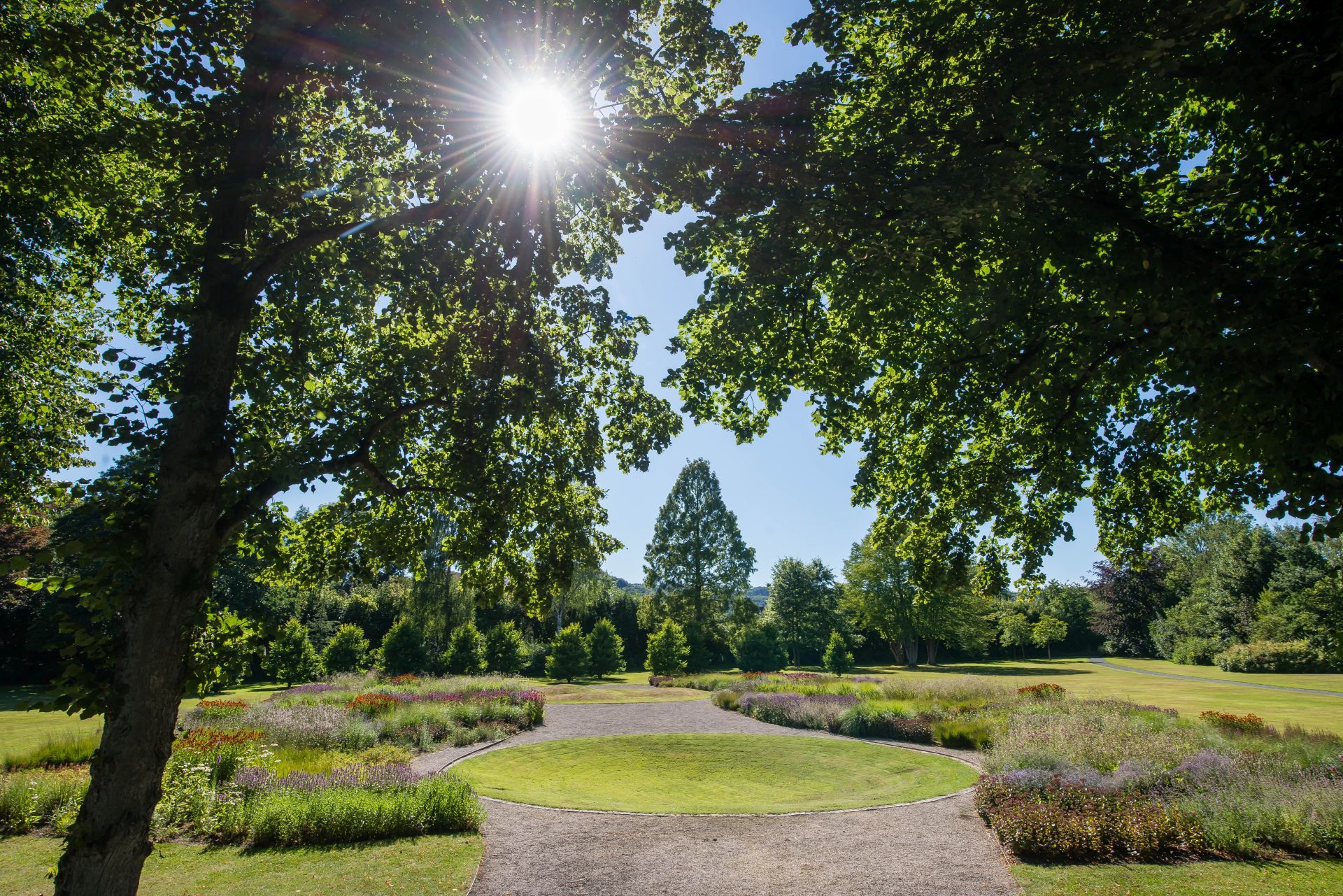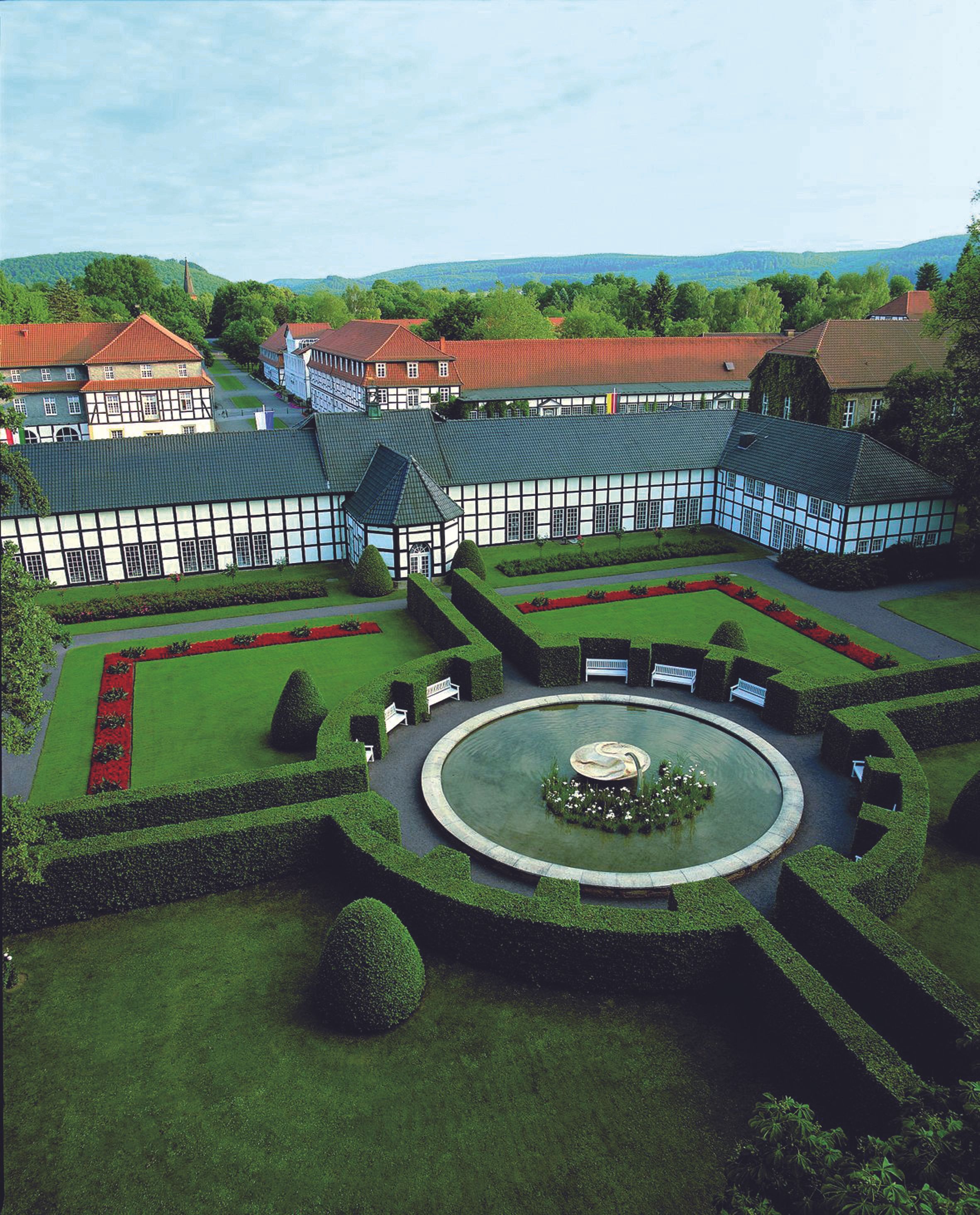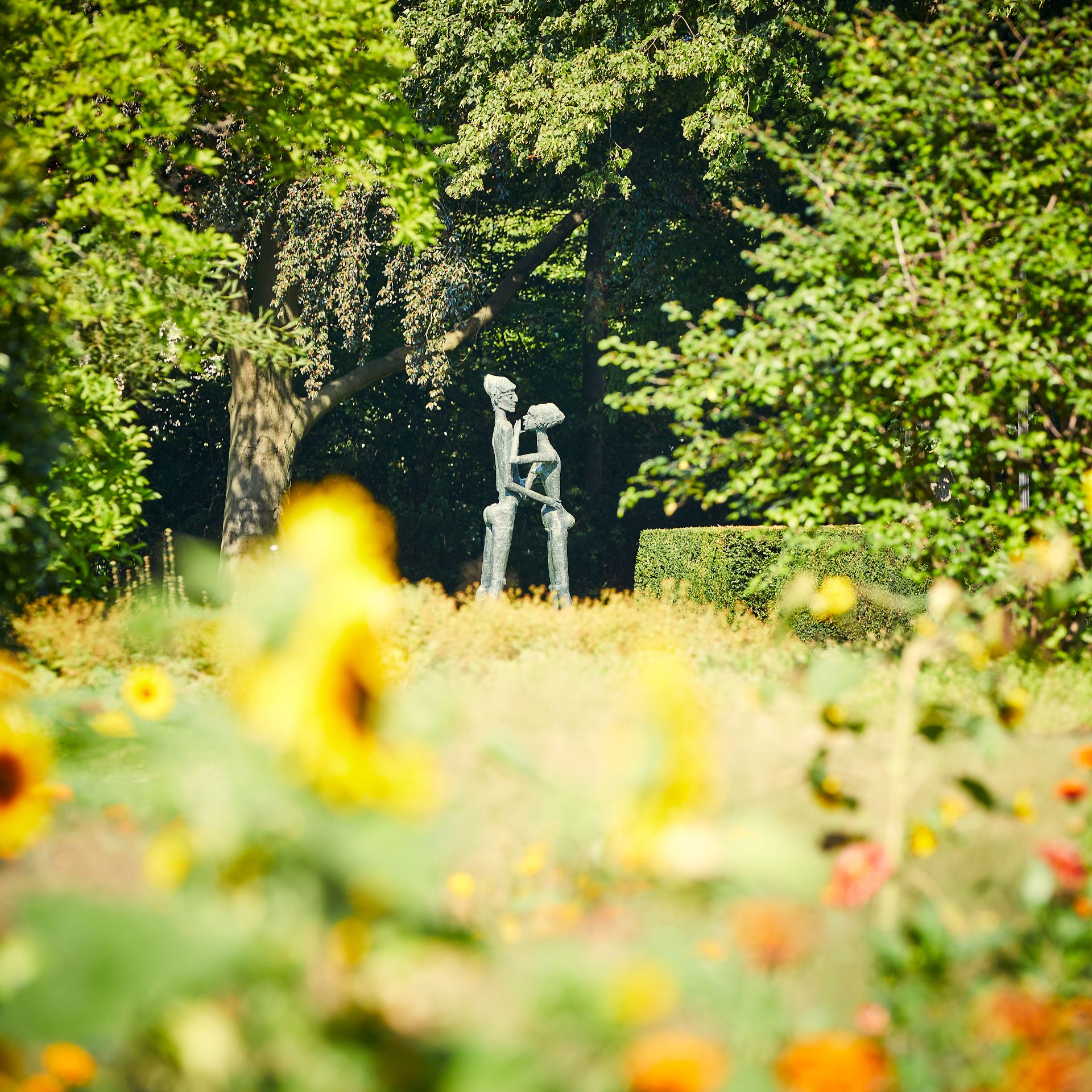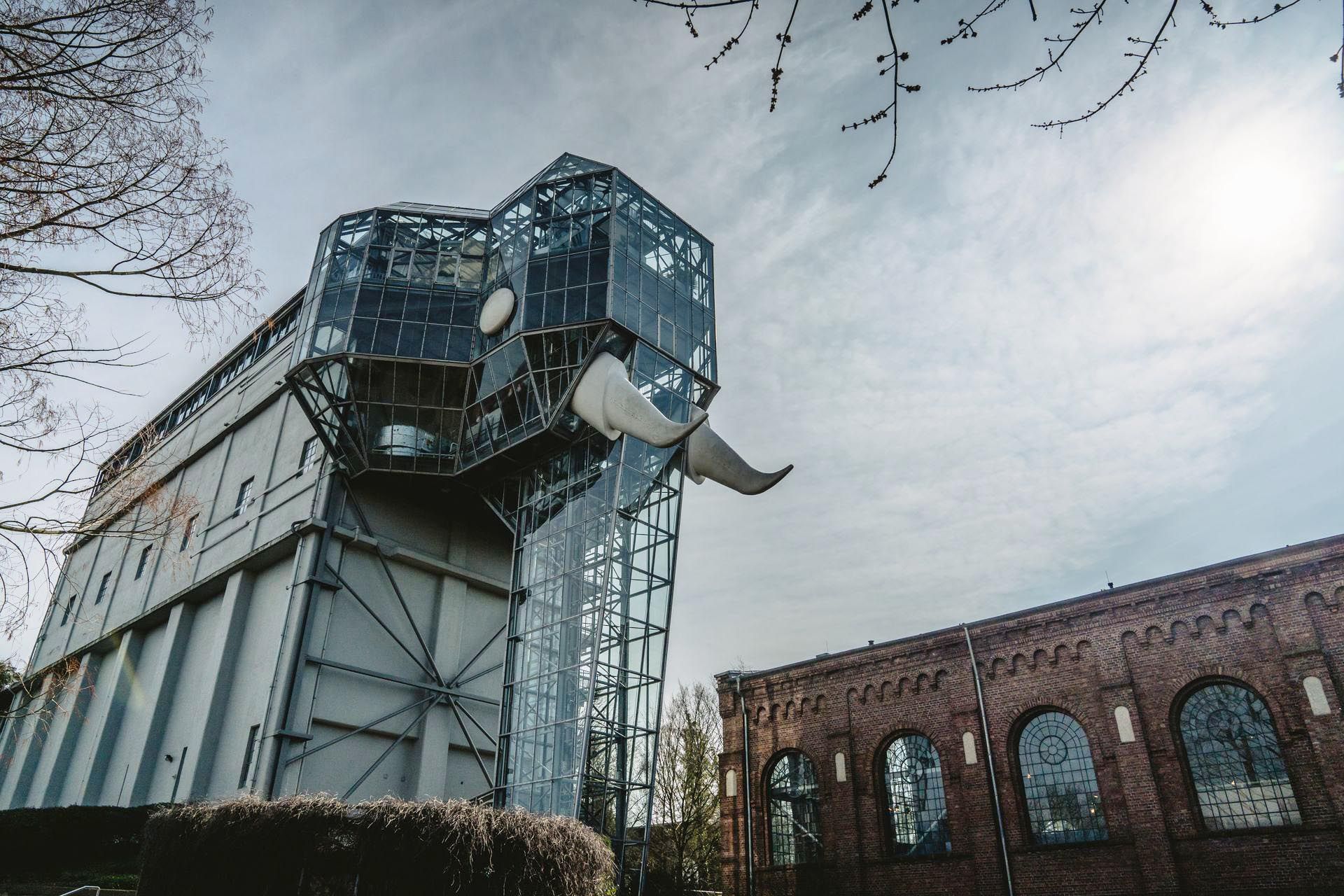A gentle morning mist lies over the extensive meadows of the Gräflicher Park Bad Driburg. The first rays of sunlight break through the canopy of majestic chestnut, lime and oak trees. They cast a warm glow on the artfully arranged flowerbeds. The scent of roses, lavender and freshly cut grass fills the air. Only the soft splashing of a water feature breaks the silence. I wonder where that sound is going?
Anyone entering the 64-hectare green grounds on the edge of the Teutoburg Forest will embark on a journey through centuries of garden design: The origins of the Count's Park date back to 1781, when the art-loving nobleman Caspar Heinrich von Sierstorpff acquired the rights to use the Driburg springs and actively developed the surrounding grounds in the years that followed. What once began as a spa developed over the centuries into one of the most impressive gardens in Germany. To this day, the park in the style of an English landscape garden remains in family ownership and is maintained with great dedication.
Several themed gardens bear witness to this, offering guests a journey of discovery through various stylistic worlds of garden art: The rose garden by British garden designer, photographer and writer Peter Coats, which he created in 1932, is particularly impressive: thousands of roses of different varieties bloom here in soft pastel shades and bright colors, framed by artfully trimmed boxwood hedges. A round Greek-style columned temple stands in the middle of the scenery. It is not only wedding couples who capture their most beautiful moments in this magical setting.
A few steps further south, strollers will find the next highlight. The perennial and grass garden by Dutch garden artist Piet Oudolf has been attracting visitors since 2009 with its natural meadow-style design. It impresses with a ribbon of perennials that meanders organically through the garden and has a path in the middle with round joints, which in turn surround circular lawns. The Piet Oudolf garden is both dynamic and perfectly formed. It is designed for movement. The dense cushions of coordinated plants underline this image, including achillea, anemones, asters, echinacea, geraniums, irises, limes, sage and veronica.
Healing and mineral springs
No less impressive is the lily meadow created by landscape architect Gilles Clément behind the fountain arcades as the end point of a white "waterfall". Gypsophila, decorative baskets and magnificent candles embody the bubbling power of water. They stand for a constantly changing nature.
Speaking of water: relaxation in the traditional resort with spa areas and lodging houses is also part of the park's enjoyment. The oasis for body and soul uses healing water from the park's own natural springs. It flows into pools and is used for drinking cures.
Other impressive points of interest in the anchor garden of the "European Garden Heritage Network" (EGHN) are the hedge garden with Ying-Yang water feature by British sculptor Angela Conner, the Hölderlin grove with Diotima island, the tulip meadow with 29,000 tulip bulbs, the Hölderlin grove with Diotima island, the tulip meadow with 29,000 tulip bulbs, the tulip meadow with 29,000 tulip bulbs and the tulip meadow with 29,000 tulip bulbs.000 tulip bulbs, the maze with the walk-in sculpture "Head and Body" by artist Michael Sailstorfer and an 8-hectare game reserve with fallow deer and Jacob's sheep, which is home to around 50 animals.
Travelers planning a longer stay in Bad Driburg should definitely visit the Driburg Therme and the Leonardo Glass Cube - a modern architectural work of art that serves as a showroom for glass products. For hiking fans, we recommend a tour on the 18-kilometre Sachsenring circular hiking trail, which leads past the Buddenberg Arboretum with a collection of more than 100 exotic trees and the Iburg ruins. Fun fact: Bad Driburg is named after the ruins as the "town at the foot of the Iburg".
